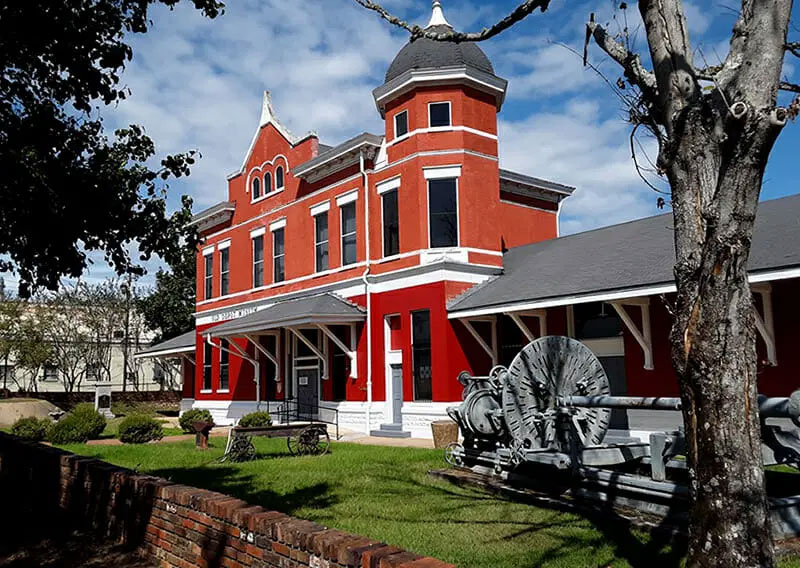Officially registered as the Selma/Dallas County Museum of History and Archives, this interpretive museum features mementos of the men and women who helped make Selma the “Queen city of the Black Belt.”
Housed within the distinctive architectural fabric of the former L&N Railroad Depot and listed on the Water Avenue Historic District National Register of Historic Places, the Old Depot Museum depicts life in Alabama and the histories that made Selma the “Queen City of the Black Belt.” Collections range from the times of pre-historic Native Americans to the Civil War, continuing through the Depression and the historic path of the Civil Rights Movement, illustrating how a site that was once home to a Confederate foundry became a critical repository for the preservation and interpretation of key documents, artifacts, and photographs related to Bloody Sunday and its aftermath. Through enlightening and enriching displays, Selma’s Old Depot Museum provides unparalleled educational opportunities for the general public and area schools, with particular respect to the path from slavery to voting rights for African Americans.
In dramatic contrast to Selma’s role in the Civil War is her role in Civil Rights. Despite what many believe, the marchers were ‘safe’ in Selma and while crossing the Edmund Pettus Bridge. The confrontation, known as Bloody Sunday, actually occurred beyond Selma city limits in Dallas County, at the southern the south side of the bridge’s footing, where officials were far less sympathetic to the notion of a “peaceful” march. Selma’s Good Samaritan Hospital received fifty victims, treating them and providing safe haven. The preserved, hand-written hospital log is just one of the priceless artifacts held by Old Depot Museum.
In 1981, the articles of incorporation for the Selma/Dallas County Museum of History and Archives were filed by Don Siegelman on April 28, 1981. The Museum serves a 994 square mile region with a population of 40,008, of which 79.3% is African American. Its primary mission is to preserve artifacts from the area and provide educational opportunities for the general public and area schools.
The Museum is now engaging in a major effort to expand and transform its collection and displays to present the many Bloody Sunday artifacts in its possession and to make essential structural improvement to ensure their security. These pieces include numerous photos from Bloody Sunday, possessions of Martin Luther King, and the Good Samaritan Hospital records from the event with hand written notations on the conditions and treatments of those beaten on that day. The Museum staff has been methodically working to transform the museum to a genuine tribute to the people who gathered in Selma to make a stand for voting rights. Nearly fifty-five years later, the lessons of Bloody Sunday still have deep relevance.
The building is a contributing property to Selma’s “Water Avenue Historic District” that is listed on the National Register of Historic Places and documented in select photographs in the Historic American Buildings’ Survey. The red brick, stone trimmed building in the Romanesque Revival style was built ca. 1890. Thanks to its design, it is one of twelve railroad depots in the Southeast designated by Southern Living to be of architectural and historical importance.
